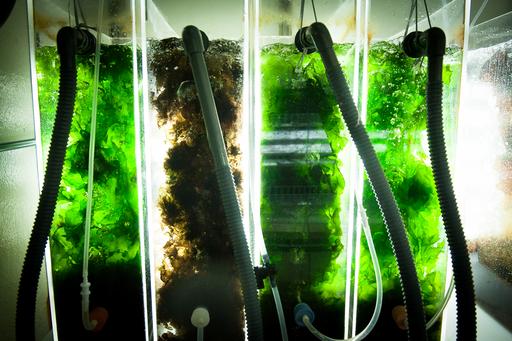Algae grown in Sweden has the potential to become an important ingredient in the foods of the future. A new thesis from the University of Gothenburg shows that the protein content of the algae sea lettuce can be increased to the same level as soybeans.
With a growing population and increasing pressure on land-based agriculture, the focus is on food from the sea. In a recent thesis, Kristoffer Stedt, a PhD student at the Department of Marine Sciences, investigates algae as a future source of protein.
"Algae contain many important nutrients such as proteins, minerals and vitamins and have a good potential to be an important part of our diet. Within five years, I think we will see many new algae products on the market," he says.
Protein content more than double
In his thesis 'Seaweed as a future protein source', Kristoffer Stedt examined the protein content of four species of algae. Early on, the green algae sea lettuce proved to have good conditions worth looking at more closely. The alga, which resembles thin leaves of iceberg lettuce, is fast-growing and varies in protein content depending on where it grows. This makes it possible to increase the protein content through the nutrient composition of the water in which it is grown.
"I have tried to collect sea lettuce from farms in the sea and grow them in wastewater from the food industry. After two weeks in the nutrient-rich water, the protein content has more than doubled," says Kristoffer Stedt.

Sea lettuce grown on the west coast has a protein content of around 15 per cent in dry weight. By growing the algae in wastewater, Kristoffer Stedt has shown that it is possible to increase the protein content to 37 per cent. This is on a par with soybeans, which have a protein content of 40 per cent.
"If we can replace soya beans with Swedish-grown algae, we would make several environmental gains. We would get a locally produced protein source that does not compete with land-based cultivation and also helps to reduce eutrophication of the sea."
Algae adds value to other foods

However, one difference between the crops is that the proteins are more tightly bound in algae than in soya beans. The proteins are therefore easier for the body to absorb if they are extracted from the algae, something that Kristoffer Stedt's colleagues at Chalmers University of Technology are investigating in the CirkAlg project.
"Sea lettuce contains both fat-soluble and water-soluble proteins. This means that several steps are required to extract them. The researchers at Chalmers are now working to develop such a two-step process and have shown very positive results."
Which algae products do you believe in the most?
I think algae can play a role in many different ways, including using the proteins from algae to complement minced meat and soya products. In the future, I think we will see products like seaweed burgers in the shops. In addition, the omega-3 and vitamin B12 content of algae adds value to the products, allowing algae to be used as an additive in other vegetarian foods.
Link to thesis: Seaweeds as a future protein source: innovative cultivation methods for protein production






